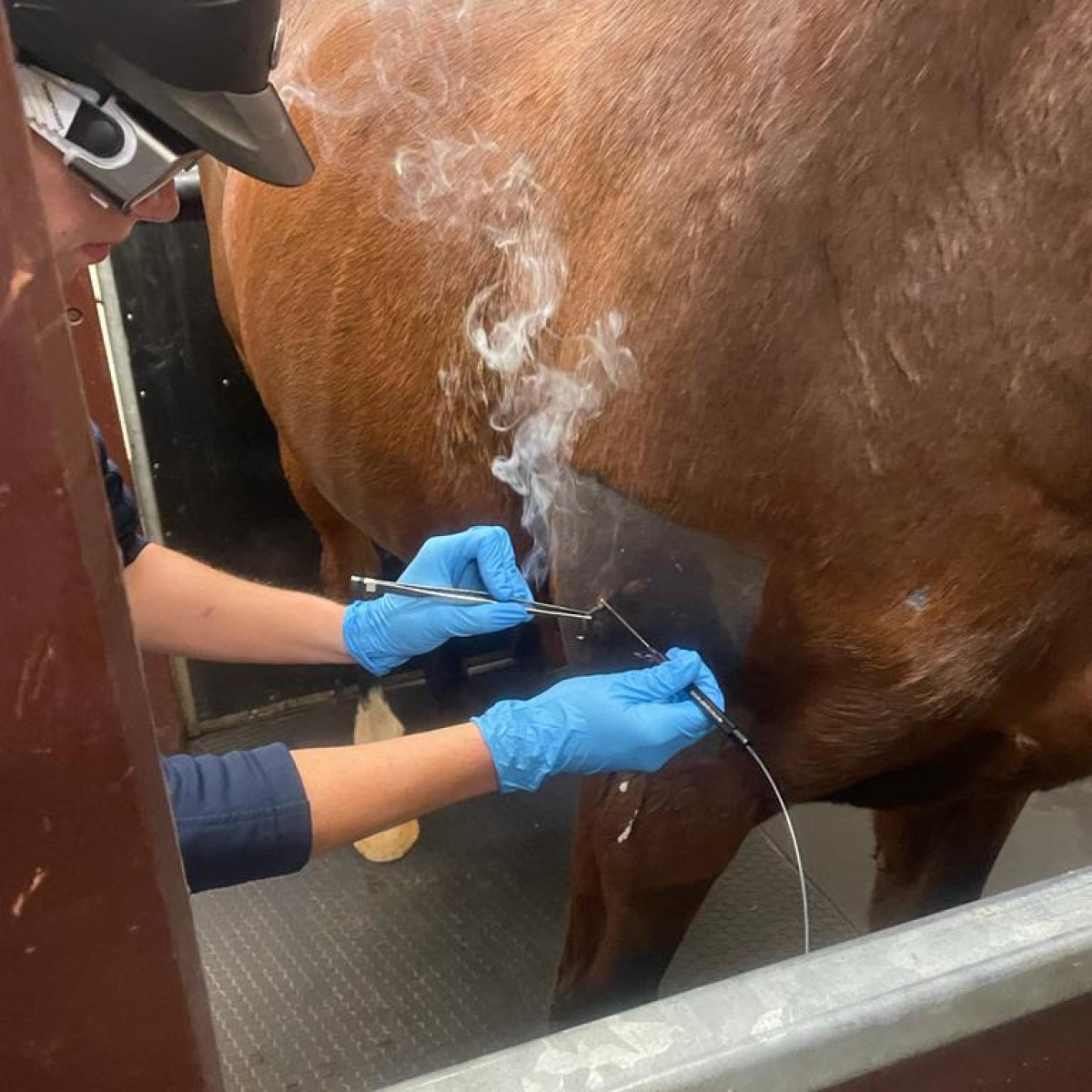Why Equine Therapy is Becoming a Preferred Choice for Emotional Health
Why Equine Therapy is Becoming a Preferred Choice for Emotional Health
Blog Article
How Laser Therapy in Equine Therapy Is Changing Vet Treatment for Equines
Laser treatment has emerged as a transformative approach in equine vet treatment, supplying a non-invasive remedy that expedites recovery and improves overall health and wellness. The transportability and flexibility of laser treatment devices further underscore their expanding necessity amongst vets.
Recognizing Laser Treatment

The innovation behind laser treatment is grounded in the concept of photochemistry, where photons are taken in by chromophores within cells, causing boosted ATP production and modulation of reactive oxygen species (Equine Therapy). This, subsequently, promotes cellular spreading, lowers swelling, and accelerates recovery. Vet practitioners use various kinds of lasers, consisting of low-level lasers (LLLT) and high-power Class IV lasers, depending on the details therapeutic goals and the nature of the equine problem being treated
Various laser wavelengths and power settings are meticulously selected to target different tissue depths and accomplish preferred scientific outcomes. Security methods are critical, as inappropriate usage can lead to thermal damage or suboptimal therapeutic effects. Thus, a comprehensive understanding of laser treatment's systems and applications is essential for its efficient application in equine veterinary practice.
Benefits for Equine Health And Wellness
The myriad advantages of laser therapy for equine wellness encompass boosted recovery, discomfort decrease, and improved flexibility. This advanced therapy method leverages particular wavelengths of light to penetrate tissues, stimulating mobile feature and advertising rapid cells repair service. The non-invasive nature of laser treatment makes certain very little tension and pain for the equine, assisting in a smoother recuperation process.
Boosted recovery is one of the primary benefits, as laser treatment speeds up mobile regeneration and collagen synthesis. This causes quicker recovery times from injuries and operations. Pain decrease is achieved through the anti-inflammatory impacts of laser treatment, which reduces swelling and reduces the production of pain-inducing chemicals. Consequently, steeds experience significant alleviation from chronic and sharp pain conditions.
Enhanced flexibility is another important advantage, specifically for efficiency and functioning horses. By reducing swelling and discomfort, and boosting cells repair service, laser therapy helps in restoring joint function and muscle mass adaptability. The cumulative impact of these benefits is not just a quicker go back to normal task yet also an overall improvement in the equine's lifestyle. Hence, laser treatment stands as a transformative tool in modern-day horse veterinary care.
Common Problems Dealt With
Laser therapy has arised as a functional treatment alternative for a range of typical equine conditions. Furthermore, laser treatment is effective for problems like osteoarthritis, where it aids mitigate joint swelling and promote tissue fixing.
Wound monitoring is an additional area where laser therapy has actually revealed considerable assurance. Persistent injuries or slow-healing ulcers can be particularly difficult in steeds, but laser treatment improves cellular regrowth and enhances blood circulation, therefore quickening the recovery process. Laser therapies have actually been efficiently employed in managing hoof conditions such as laminitis and abscesses, Full Report minimizing pain and promoting much dig this faster healing.

Innovation Behind Laser Therapy
Past the myriad problems treatable with laser treatment, the modern technology itself benefits more detailed evaluation. At the heart of laser therapy is using details wavelengths of light to penetrate tissues and evoke biological responses. These wavelengths, usually ranging from 600 to 1000 nanometers, are selectively soaked up by chromophores in the skin, muscle mass, and various other cells, prompting a waterfall of mobile events.
Laser gadgets used in veterinary medicine usually make use of low-level laser treatment (LLLT) or cold laser therapy. Unlike high-powered medical lasers, these devices run at reduced power degrees, optimizing therapeutic advantages while decreasing thermal damages. The energy from the laser light boosts adenosine triphosphate (ATP) manufacturing, enhances cellular metabolic rate, and speeds up tissue repair work processes.

Success Stories and Study

Showcasing the concrete advantages of laser treatment, countless success tales and instance studies brighten its transformative effect on equine health. One such instance involves a thoroughbred racehorse struggling with chronic tendonitis. Typical therapies produced marginal enhancement, but after integrating laser treatment into the program, the equine displayed considerable reductions in swelling and discomfort within weeks, inevitably going back image source to competitive auto racing.
Another engaging instance includes a dressage steed identified with extreme pain in the back, limiting its efficiency. A vet team utilized low-level laser treatment (LLLT) to target the swollen areas, causing marked renovation in flexibility and a significant reduction in pain. Over several sessions, the horse restored its peak type, showcasing the effectiveness of laser treatment in addressing bone and joint concerns.
Additionally, a study conducted at a leading equine center analyzed 50 steeds with numerous soft tissue injuries treated with laser treatment. The results were striking: 85% of the horses demonstrated sped up recovery times and improved wheelchair. These cases emphasize the versatility and performance of laser treatment in equine medicine, supplying a non-invasive, scientifically-backed technique to improving recovery and efficiency in horses.
Verdict
Laser therapy is transforming equine vet treatment by supplying a non-invasive therapy that increases healing, decreases inflammation, and minimizes pain. With its performance in dealing with a series of problems, from musculoskeletal injuries to chronic ailments like osteoarthritis, this technology dramatically enhances equine wellness and mobility. The portability and adaptability of laser treatment additionally highlight its transformative effect on veterinary practices, strengthening its role as a crucial tool in contemporary equine medical care.
Report this page